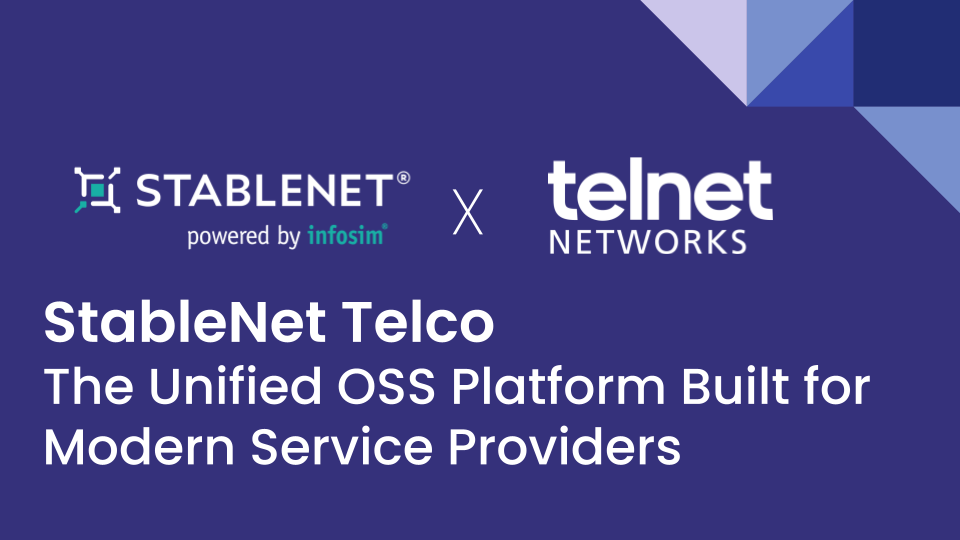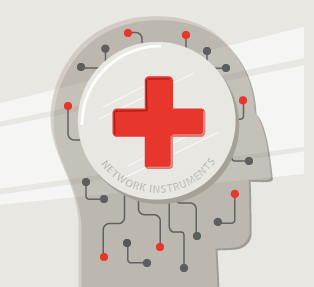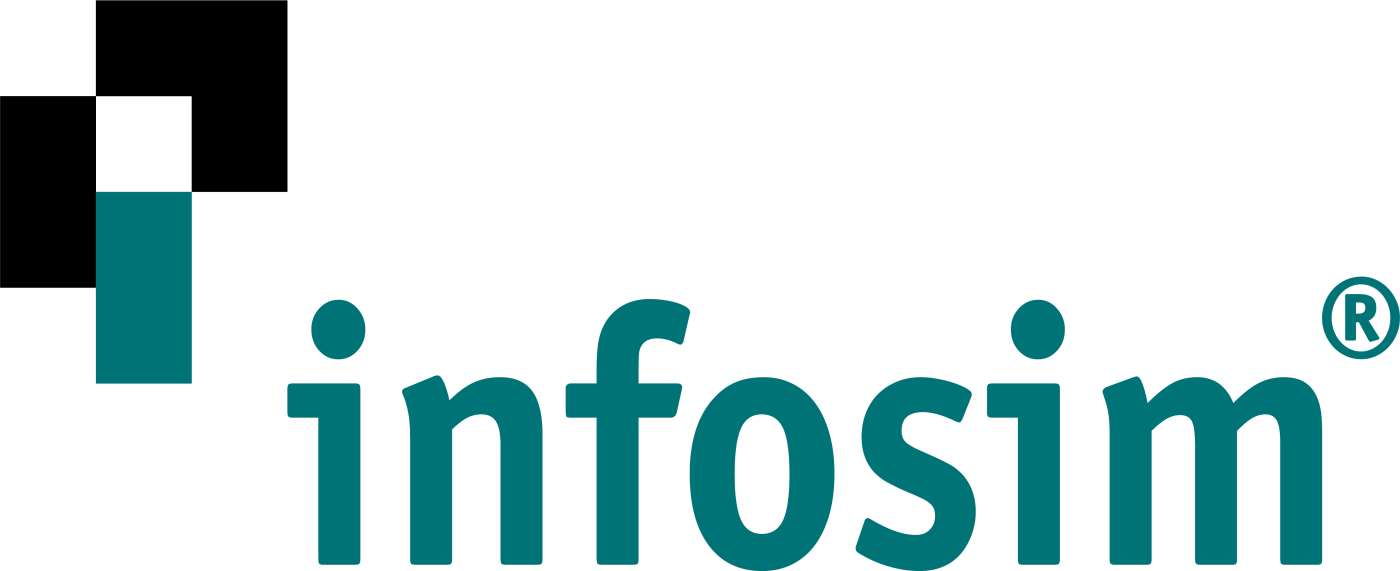Why Service Providers Across Canada Are Choosing Infosim StableNet for Automation, Visibility, and Operational Efficiency
For Canadian service providers, the pressure has never been greater. Networks are more complex, services are more dynamic, and customer expectations are relentlessly high. Traditional, siloed OSS tools are no longer enough—operators need automation, end-to-end visibility, and seamless integration across their network and service layers.
Infosim® StableNet® Telco, represented in Canada by Telnet Networks, delivers exactly that: a unified, highly automated OSS platform that simplifies operations, reduces costs, and accelerates service delivery. Backed by nearly two decades of engineering excellence, StableNet is used globally by Tier-1/2 carriers, ISPs, MSOs, utilities, and critical-infrastructure operators who demand reliability, scalability, and ease of use.
Why StableNet Telco Matters Right Now
Most telco environments are burdened by fragmented management tools—separate systems for fault, performance, provisioning, configuration, and inventory. This creates operational blind spots, inconsistent data, higher costs, and slower response during outages.
StableNet solves this with a 4-in-1 OSS automation platform, unifying:
- Discovery & Inventory
- Fault Management & Root-Cause Analysis
- Performance & Service Level Management
- Network Configuration & Change Management (NCCM)
All delivered through a single platform, single UI, and single data model.
This means:
- One tool to operate
- One database to maintain
- One licensing model
- One source of truth for all network assets and services
What Makes StableNet Telco Stand Out?
1. A True Unified OSS—Not a Bundle
StableNet isn’t a collection of stitched-together modules. It’s an integrated architecture built from the ground up using:
- Service-Oriented Architecture (SOA)
- A fully unified data model
- Vendor-agnostic device interaction layers
- Integrated automation workflows
This eliminates tool silos and enables automation impossible with legacy NMS or multi-vendor OSS stacks.
2. Automated Discovery & Accurate Inventory
StableNet performs deep, multi-layer discovery across physical, virtual, and cloud infrastructures, creating:
- A real-time, auto-maintained inventory
- Unified service and device topology maps
- Automatic detection of configuration drift or unauthorized changes
Accurate inventory is the foundation for everything—from RCA to provisioning to compliance—and StableNet delivers it with exceptional precision.
3. Intelligent Fault Management & Real-Time RCA
One of StableNet’s most valuable features is its automated root-cause analysis (RCA). Instead of overwhelming NOC operators with thousands of alarms, StableNet:
- Automatically correlates 90%+ of alarms
- Identifies the actual root cause
- Enriches alerts with service and customer impact
- Requires no custom correlation rules
- Adapts dynamically as the network evolves
This dramatically reduces MTTR and allows operators to prioritize service-impacting issues.
4. Deep Performance Management & SLM
StableNet collects and normalizes performance data from sources such as SNMP, NetFlow, IP-SLA, CDRs, REST APIs, SQL, and more. Operators can actively simulate VoIP or video traffic to measure MOS, R-Factor, and other KPIs.
Highlights include:
- Configurable KPIs
- Advanced Service Level Management (SLM)
- Historical and real-time trending
- Automated PDF, Excel, and HTML report delivery
- Capacity and growth planning insights
5. NCCM: Carrier-Grade Configuration & Change Automation
StableNet’s NCCM module provides telcos with robust configuration governance, including:
- Real-time configuration backup
- Full version history and rollback
- Template- and script-based automation
- Policy-based compliance enforcement
- Security vulnerability notifications
- End-of-Life/End-of-Service alerts
This minimizes configuration-related outages, enforces corporate standards, and supports compliance frameworks such as SOX, PCI, and ITIL.
6. Designed for Carrier-Grade Scale
StableNet supports:
- 60+ vendor families
- 800+ device models
- Hybrid, cloud, and virtualized topologies
- Multi-tenant service provider environments
It is built for national carriers, regional ISPs, utilities, and operators with rapidly growing infrastructure footprints.
7. Built on TM Forum Standards (eTOM, SID, Frameworx)
StableNet aligns with core TM Forum frameworks, enabling seamless integration with OSS/BSS environments and ensuring future-proof architectural compliance.
8. IoT, 5G, and Emerging Technology Ready
StableNet is already deployed across:
- 4G/5G networks
- LoRaWAN
- Sigfox
- ARM/Intel IoT architectures
The platform provides “any-to-any” visibility across legacy and modern IoT networks—ideal for utilities, smart-city rollouts, and next-gen broadband providers.
Where StableNet Creates the Most Value
Operational Savings (OPEX)
- Unified toolset reduces workflow complexity
- Automated RCA reduces MTTR
- Automated configuration lowers human error
- Improved network availability reduces SLA credits
- Lower audit and compliance overhead
Capital Savings (CAPEX)
- Consolidation of legacy EMS/NMS tools
- Predictable, device-based licensing
- Reduced infrastructure footprint
- Long-term platform stability
Most operators realize ROI in 6–12 months.
Easy to Deploy, Easy to Use
StableNet is known for its practical, low-risk implementation model. Operators can start small—with NCCM, fault, or inventory—and expand to full OSS automation when ready.
Benefits include:
- Fast implementation cycles
- Modular adoption paths
- Integration with existing NOC toolchains
- Intuitive, operator-friendly user interface
- Simplified, transparent licensing
StableNet + Telnet Networks: Delivering OSS Excellence in Canada
As the Canadian distributor and professional services partner for Infosim®, Telnet Networks provides:
- Local technical expertise
- Design and deployment services
- Integration with existing OSS/BSS systems
- Custom KPI and dashboard development
- Ongoing support and managed services
Our team helps Canadian service providers of all sizes modernize their operational ecosystems with a proven, strategic, and scalable OSS foundation.
Ready to See StableNet in Action?
Telnet Networks offers:
- Live demos
- Architecture reviews
- Proof of Concept deployments
- ROI assessments and toolset consolidation guidance
Contact us to begin your OSS modernization journey.
















